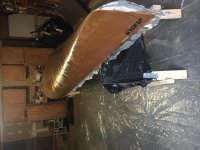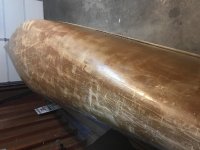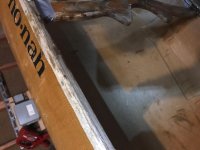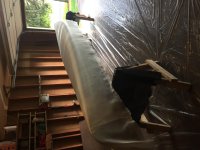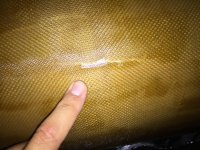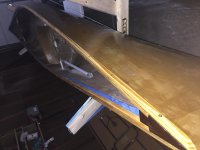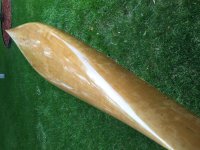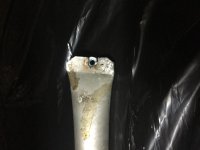Sadly, I happen to own one of these. Snagged it off CL for $300 a couple summers ago. Gunwales are rotted and the chine cracked a bit when I was strapping it to the roof rack on the way to the BWCA last summer (held up fine with duct tape!). I figured the only option left is to give her a layer of fiberglass to add some strength, so here we go! I ordered some 4 oz 60" e-glass from Raka and have some of their epoxy left over. Sanded, removed the outwales, then laid up the glass tonight.
Has anyone ever tried this before? Also, I'm thinking of doing another light sand before a final fill coat of epoxy but I see you stripper folks seem to prefer to just go straight for the fill coat(s). Weight is a concern for me, but it has to be strong enough to last a bit longer. I'll let you all know how it turns out and holds up over our BW trip in early July.
Has anyone ever tried this before? Also, I'm thinking of doing another light sand before a final fill coat of epoxy but I see you stripper folks seem to prefer to just go straight for the fill coat(s). Weight is a concern for me, but it has to be strong enough to last a bit longer. I'll let you all know how it turns out and holds up over our BW trip in early July.

